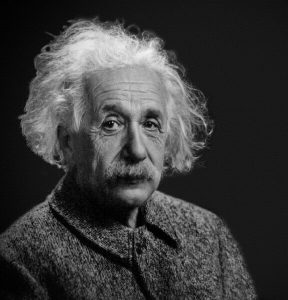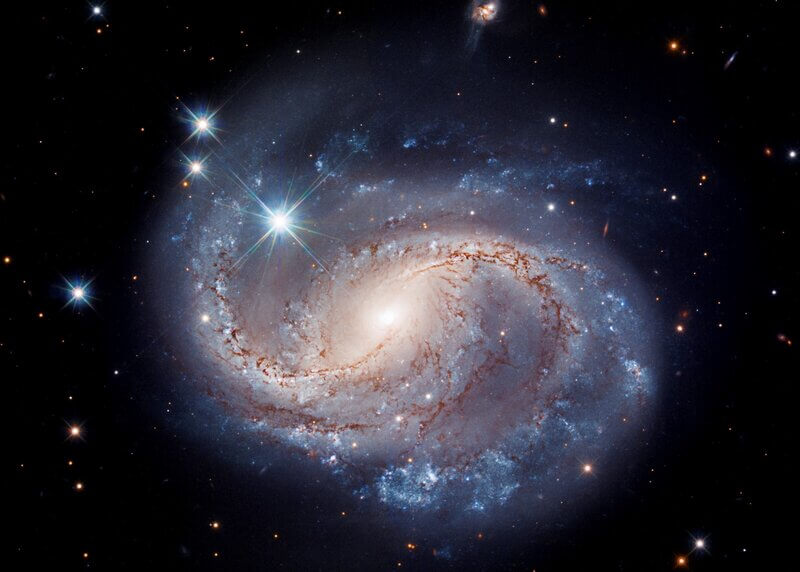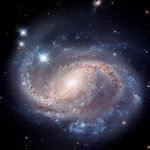Evidence for God’s Existence
Is there any evidence for the existence of God? If so, how can we find it? These questions, if asked and pursued sincerely, can lead one into a great body of knowledge and truth. But if asked just to challenge and debate, one might not gain little more than an argument. I maintain there is strong evidence for God’s existence from logical, scientific and historical perspectives. If you are a skeptic or agnostic, my hope is that this article will persuade you.
Evidence Verses Proof
Some people ask for proof of God’s existence, and when there is lack of proof, they claim this shows God doesn’t exist. But proof is physical evidence that it is undeniable and irrefutable. There is no (nor can there be) physical proof of God’s existence, since he transcends the physical world. So, “proof” is not the goal of any inquiry into the existence of God.
To approach the subject, we need to look at evidences, and not demand proofs.
Science is unbiased inquiry into something that is unknown. But science deals only with the material world, and the scientific method can prove something only if it is observable, measurable, and repeatable. Therefore, many if not most theological beliefs cannot be addressed through science. But science does have a place in the discussion about God, because there are many evidences in the physical universe for the existence of an intelligent Creator, from a micro to a macro scale. All the examples in this article are such evidences of God’s existence.
God the Uncreated Creator
Throughout history, humans have believed in different concepts of God and portrayed their gods using human images and characteristics, or images from the physical world such as carved statues.
But when Christians say God, we mean the uncreated Creator of all spiritual and physical things, forces, realms, and worlds. The components of the physical realm are finite and measurable. If God is Creator, then he is outside of the physical world and can’t be observed, measured, or subject to physical investigation. If God were a part of the physical world in any way, then he would not be the Creator. Therefore, any concept of a Creator God as being a part of what was created is faulty. Without this understanding we can’t discuss God intelligently. That’s why Christians say that God is transcendent (existing beyond the physical realm). It also means he exists beyond time, since time and space are inseparable.
But if God created the physical world, then we would expect this world to reflect his attributes in some way. We would be able to learn what he is like by observing what he created.
Paul’s Argument for God’s existence
About 57 A.D. the apostle Paul wrote that there are abundant evidences for God’s existence:
For since the creation of the world God’s invisible qualities—his eternal power and divine nature—have been clearly seen, being understood from what has been made, so that people are without excuse. (Romans 1:20)
Paul reasoned that although God himself is invisible to the physical world, his qualities are seen in the things that he has made. His logic was that the Creator must be at least as powerful, magnificent, and complex as the universe he created (but more so), and these attributes are visible to all who live in this world. He could see the stars, the vastness of space, and the immense power displayed in the cosmos. So, he knew the Creator must be infinite, eternal, and immensely powerful or omnipotent. And he could see nature with its beauty and complex biological life including intelligent beings living on the earth. So, God must be exceedingly intelligent.
Theologians call this general revelation, meaning what can be known about God by observing nature, which includes what can be discovered through science. Today, we can see much more than Paul did: countless stars and galaxies millions of light years away and extending out into immeasurable expanses of space. And we can see microscopic views of biological life, rocks, minerals, and even atoms.
The Beginning of the Universe
The principle of cause and effect says that whatever has a beginning has a cause. There is now abundant scientific evidence that the universe had a beginning—a huge explosive release of energy (popularly called the Big Bang). This requires a First Cause, which we term God. Without God, we would have to believe that nothing produced everything that exists.
But there must’ve been control behind this event. Why wasn’t the beginning of the universe just a totally uncontrolled release of energy? How did there come to be uniformity, order, complexity, function, beauty, and intelligence in the cosmos from an explosion of raw energy? Some mechanism must have controlled this cataclysmic event to result in the present form of matter and the universe as we see it now. Without it, a totally chaotic universe might have occurred. That mechanism of control was God, as explained by the writer of Hebrews:
By faith we understand that the universe was formed at God’s command, so that what is seen was not made out of what was visible. (Hebrews 11:3)
God’s existence shown in the physical universe
Physical constants
The physical universe is defined by inviolable laws, commonly called the laws of nature. When these laws are expressed as equations, constants appear whose values are unchangeable. There are many of these physical constants, including the force of gravity, the speed of light, the mass of atomic particles and the forces holding them together. These laws are universal and unchanging, as they have well-defined and demonstrated mathematical relationships to the real world. They define and govern the universe we live in, and their existence strongly suggests a transcendent Law Giver. Without established physical properties and laws, there would be no physical universe at all.
Complexity, Uniformity, and Order
Complexity, uniformity, and order are observed in nature. They exist in every part of the universe—from a subatomic to a galactic scale—and demonstrate an intelligent origin.
Order on a large scale can be seen in the movement of the planets around the sun and the stars within the galaxies, in response to the physical constant of gravity. On a small scale we see order as well as uniformity in sub-atomic particles, atoms, and mineral crystals.
Sub-atomic uniformity
There are many types of particles present in the universe. Protons, neutrons, electrons, and photons are the most visible to us. There are trillions upon trillions of particles, but each type of particle is incredibly uniform in size, energy, and behavior. This uniformity demonstrates a design, which requires a Designer.
Atomic uniformity
Atomic uniformity and order are everywhere present in the universe. The neutrons, protons, and electrons within each atom all behave according to the physical laws, giving rise to individual elements. There are many types of elements —hydrogen, nitrogen, iron, uranium—each uniform in size, mass, and energy, being governed by the physical laws. The size of each type of atom and its nucleus, and the energy levels within them are completely uniform, ensuring that they behave consistently in chemical reactions.
Crystalline order
Mineral crystals are a perfect example of order. The crystal structure of each mineral is based on an orderly arrangement of specific atoms in a lattice structure. This arrangement is reproduced in three dimensions billions upon billions of times in each crystal. Light passing through crystals behaves exactly the same for each mineral type, revealing a common internal structure. Variations or impurities in the lattice structure give rise to the interplay of colors and incredible beauty. All this points to an intelligent Designer.


Randomness and Cause and Effect
The universe also contains chaos, disorder, and randomness. On an atomic level, chemical reactions are chaotic, as are the transfer of heat energy and gas and water pressure. The position of electrons in the energy shells of each atom is also chaotic. Randomness also occurs in geologic events, chemical reactions, and biological processes. But without randomness the cosmos would be unintelligible—there would be no effect of one media upon another or transfer of energy—without cause and effect. Combinations of order and randomness make the universe what it is, with diversity, cause and effect, interaction, and beauty.
Order in the midst of disorder reveals God’s existence
Complexity and order within the universe present very compelling evidences for God’s existence. If we can point out uniformity, complexity, and order in the universe, then we will have to consider the strong evidence for an intelligence behind it, regardless of how much disorder surrounds it.
Consider when archeologists discover writings on a tablet buried deep in the earth. The markings show complex patterns with many being uniformly repeated and all of them arranged in a linear order. The letters demonstrate a written language, especially since they appear on the surface of a fired clay tablet. The surrounding material that it was found in might be a totally random mixture of sand, clay, gravel, or debris. The researcher may not know the meaning of the letters. But that one tablet is compelling evidence that intelligent beings lived there in the past.
In the same way, just one significant example of uniformity, complexity, or order in the universe demands an explanation as to how it happened to exist in a world otherwise filled with disorder. But as we know, all three are present in every corner of the cosmos, not just in isolated examples. Without God, we would have to believe that pure chaos produced order and complexity, which is illogical.
Complexity and function in biological life
Biological life is extremely complex. The complexity of even the simplest forms of life point to an intelligent Designer. Biological life is not just the product of raw physical elements, chemistry, and physics. It also requires information, and DNA which contains incredibly complex and voluminous information occurs in every cell of every biological organism.
And DNA doesn’t just store information, it conveys specifications as to how the organism will develop and function. It provides instructions that perform functions within each cell that guide chemical reactions to produce the necessary proteins that build the organism. It’s difficult to imagine how such complex information and functions in DNA could develop from raw lifeless materials without direction from the mind of a transcendent Designer.
The beginning of life on earth is a hotly debated topic. But all researchers agree that the odds of random chemical reactions resulting in reproducible life by pure chance are extremely small.
Watchmaker argument for God’s existence
A watch is very complex and therefore must have an intelligent designer. However, complexity is only one aspect of a watch that demonstrates intelligent design. The parts are also arranged in an orderly fashion which work together to give the watch a function, that of telling time. Someone who had never seen a watch before would still have to acknowledge it had an intelligent designer and maker, even if it wasn’t working. The fact that it has the function of telling time points to the intent of the designer. This requires an intelligent origin, regardless of how it was created.
The complexity of biological organisms alone is compelling evidence for the existence of God. But we observe not only complexity but order and function within biological life. The functions within organisms to sustain, maintain, and reproduce life provide even more compelling evidence for an intelligent origin. Function implies purpose and intent, which require intelligence and volition. Order within the plant and animal kingdoms is also observed with the interdependence of species within ecosystems and their ability to adapt to established seasons.

Beauty
The universe would be very monolithic and stark if only order existed. Conversely, total randomness would be chaotic and incoherent. But randomness in combination with order gives rise to form and beauty. When we say that something is beautiful, we mean that it is beautiful to us humans.
Calling something beautiful is recognizing a greater quality or deeper meaning present than just the raw physical elements themselves. In a sense, it’s an elemental form of worship. It’s not just the physical that’s being praised, but something behind it that makes an otherwise physical scene beautiful. The existence of beauty points to a Creator who is the One behind it and allows us to see and appreciate it.

Personhood and Intelligence
The source or creator of something must be greater than the thing that is created. If there is a Creator, then his existence must be on a higher level than any component in the created world. It follows that the Creator must be greater than the greatest created being.
A personal being (one having “personhood”) is the highest level of existence we can see in the universe. A personal being possesses self-consciousness, intelligence, volition, emotion, and the capacity to communicate. If such a being has a body, the body is just the physical vehicle through which the person exists. Consciousness and personhood cannot come directly from inanimate matter. It’s against logic and the principle of cause and effect that such a being can be produced spontaneously. In other words, only a personal Creator can create another personal being. Without God, we would have to believe that unconscious matter produced conscious rational beings.
Since humans have personhood, then their Creator must also have it. So, God by definition must be a personal Being and not just an impersonal force.
God’s image as seen in humans
A basic belief of the Christian faith is that humans were created in God’s image. This means that humans possess basic personal characteristics of the Creator: intelligence, communication, volition, awareness of right and wrong, emotion, and creativity. Since we observe these qualities in all humans, if there’s a Creator, he must also have them, but to a much greater degree.
Intelligence is the ability to think abstractly, to learn or understand, and to create. If we observe intelligence in the physical world, then its source must also possess intelligence. In fact, it must be more intelligent than the most intelligent created being. Therefore, our Creator must be much more intelligent than us. The great complexity, depth, and creativity of the human mind suggest a Creator of incredible intelligence. Because God is infinite, we conclude he must be infinitely intelligent. A Creator God must therefore possess and control all knowledge, revealing knowledge to those created beings who seek it.


Humans also have an embedded awareness of right and wrong, of transcendent moral laws. Some have suppressed this knowledge and as a result have a diminished moral sense. But all people have some sense of moral behavior, including the need for love, respect, and forgiveness in our personal lives and in society. Even atheists don’t live without a moral code to guide their behavior. There must be a transcendent Creator who gives us this awareness.
How is it that intelligent beings like us who live in such a vast expansive universe can even think about such concepts as God and eternal values if there were no such possibilities? Without God, the universe would be purely materialistic without any transcendent components or values.
Christ, the greatest revelation of God’s existence
The historical appearance of Christ is the greatest evidence for God’s existence that is available to us. His birth, life, death and resurrection are compelling evidence for an intelligent God who made a special effort to reach out to communicate to us not only his existence but his love for the human race. A full explanation of Christ’s coming and purpose is beyond the scope of this article, but the following articles offer a more complete picture: The Descent of Christ to Earth, and The Coming of Christ the Savior: God with Us.
Awe and Wonder
God gives humans privileged views of his creation. These views allow us to appreciate his glory and power, but from a safe distance on earth. The beauty, power, and magnificence of the physical world bring us to awe and wonder. When we are in awe, we’re acknowledging something much greater than ourselves.
The closer we look into the physical world, the more awe-inspiring it becomes to us. Through powerful telescopes we can see further into space than ever before. Many of what the ancient people believed to be stars we now know to be whole galaxies. There are terrifying places in the cosmos that demonstrate God’s awesome power: the center of a star, a black hole (super-dense collapsing star), or a super nova (violently exploding star). In the back of our minds, we sense that there must be a Creator that makes it all happen in this way.

How people respond to God’s magnificence
But people respond to the magnificence of the universe in different ways and degrees. To some scientists, the physical world resulted from a process that had an inevitable result. Because of the nature of matter and the universe they say, it couldn’t have happened any other way. Others think that if they can demonstrate a continuous flow of cause and effect, then belief in God isn’t necessary.
But neither of these views explain how the universe began. And looking at the end result, one cannot discard the impressive evidence for an intelligent origin, regardless of the path that led to the end point we see now.
Diminished Awe and Wonder
Most religious people can appreciate God’s creation. And even atheists are known to be awe-struck by the magnificence of the cosmos. For children, the simplest of things such as a caterpillar or a bird flying in the air can inspire them to awe and wonder— it’s all new and impressive.
But adults can become jaded over the years. With time it may take more and more to inspire or impress them. This is common with people involved in the sciences. I remember the awe and wonder that I experienced the first time I looked at thin sections of rock viewed through a polarized light microscope. The interplay of colors produced by the light passing through each individual crystal was truly awesome and beautiful. But after a year working in a geology lab, my appreciation for the beauty waned.

The fact that some people are awed by what they see in the cosmos is not proof of God’s existence. But given flawed human nature, the lack of awe in some people is not proof that he doesn’t exist. It only shows that some people can see what others can’t.
Responding to evidence for God’s existence
The atheist claims there is no God. Most atheists who read this article will likely dismiss it as unpersuasive. Other people simply refuse to even think about God’s existence because they are unwilling to believe, and no amount of evidence will convince them. Being convinced of something without any evidence is foolish, and some religious people meet this description. But refusing to believe in God in the face of evidence is also foolish. I’m hoping that you as a reader are not any of these.
But the agnostic admits they don’t or can’t know for sure. If you fit this description, my hope is that you’ll consider the evidence I have presented.
I believe God is personal, intelligent, and can communicate with you to respond to your doubts and questions. Seek God and let him speak to you in a way that you can hear and respond. You won’t be disappointed.
Featured photo: spiral galaxy M106, photo credit: NASA, ESA, and the Hubble Heritage team
¹https://opengeology.org/Mineralogy; Minerology, Free Textbook for College-Level Mineralogy Courses; Chapter 13 Crystal Structures
Christ in Scripture is listed on Feedspot Top 200 Christian Blogs.







6 thoughts on “Evidence for God’s Existence”
There has never been a time in my life when I didn’t believe in a Creator, but as I’ve gained life experience, I’ve come to appreciate that creation truly is amazing. At the quantum level, randomness is the rule, but the probabilities are such that the physical world we experience is completely reliable and predictable. The more we discover about the physical world, the more amazing it becomes.
When we comprehend all of this, it should be reassuring, because a reliable and sensible physical world bears witness to a reliable and sensible Creator. Our God sustains the Universe, and He sustains us.
“There is now abundant scientific evidence that the universe had a beginning—a huge explosive release of energy (popularly called the Big Bang).”
This statement is untrue. The current model of the universe the BGV theory states that only the expansion of the universe had a beginning.
Not only that but there are many refutations of the fine tuning argument. The author doesn’t mention any of those.
Paul, Thanks for your comment. I am not a physicist or cosmologist, but my understanding of BGV is that it’s still a theory and being debated. There is no settled consensus among cosmologists. The most accepted belief is still the big bang. In any case, BGV doesn’t disprove the existence of a Creator God, it only shifts the discussion slightly. With regards to “refutations of the fine tuning argument” this article is not about refuting anyone else’s arguments but presenting those that I find most convincing. I hope that you can find the answers you are looking for in your search for truth.
Scott
I am in disbelief, such great information; oh my God where was it kept? Lord thank you I found this mysterious teaching of the depth of God that is hidden to many. I want to know more of this; can I get a book if possible?
Angel,
I’m sorry, I have not written any books on this topic. But there are other authors who have written good books on this such as Frank Turek, Steven Meyer, and Hugh Ross.
Blessings, Scott
This is awesome. What a Mighty Creator we have. Thank you, Scott Rogers